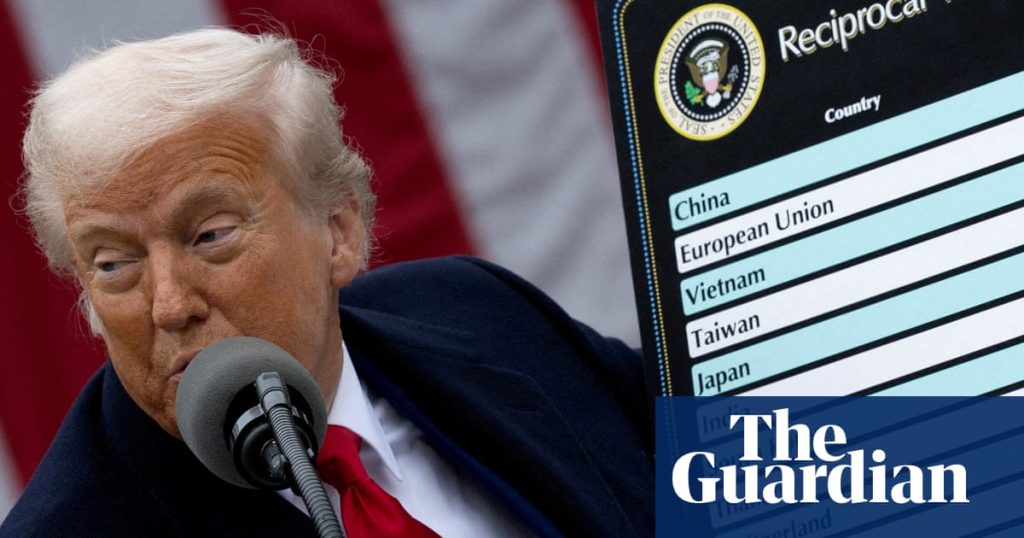Trump’s Trade War Escalates: A Deep Dive into the Looming Tariff Deadline and Global Impact
The global trade landscape is once again in flux as former US President Donald Trump intensifies his trade war tactics. After initially announcing a “reciprocal” tariff package in April, the Trump administration has set an August 1st deadline for over a dozen nations to strike deals or face steep tariffs. This move, characterized by shifting timelines and ambitious goals, has triggered widespread confusion and market volatility, leaving businesses and policymakers scrambling to adapt.
This article breaks down the latest developments in Trump’s tariff rollout, examining the affected countries, the status of negotiations, the economic repercussions, and the potential long-term implications for global trade.
The Shifting Sands of Trump’s Tariff Strategy
President Trump’s approach to trade has been marked by a willingness to disrupt established norms and challenge existing agreements. The “reciprocal” tariff package, initially slated for implementation in April, was delayed by 90 days to allow for negotiations. However, as the new deadline approaches, the administration’s initial promise of securing “90 deals in 90 days” seems increasingly unrealistic.
At the start of this week, Japan, South Korea, and 12 other nations received formal notification that they could face tariffs of at least 25% starting in August if they fail to quickly negotiate trade agreements with the US. The administration also warned that any retaliatory measures or attempts to circumvent the tariffs by rerouting goods through other countries would be met with further increases. This aggressive stance has amplified uncertainty and raised concerns about the potential for further escalation.
The specific tariff rates vary from country to country. While South Korea faces the same rate initially announced in April, Japan is slated for a slightly higher rate. This seemingly arbitrary variation underscores the unpredictable nature of the administration’s trade policy and its reliance on bilateral negotiations.
Which Nations are in the Crosshairs?
The list of countries facing potential tariff hikes is diverse, spanning Asia, Africa, and Europe. Fourteen nations have already received formal notification, with more expected to follow. The proposed tariff rates range from 25% to 40%, with developing nations in Southeast Asia facing some of the most severe levies.
Specifically, Indonesia could see tariffs of 32%, Cambodia and Thailand 36%, and Laos and Myanmar 40%. Manufacturing hubs like Bangladesh face a 35% tariff, while Tunisia, Malaysia, Kazakhstan, South Africa, and Bosnia and Herzegovina could face 30% tariffs if they fail to reach a deal.
The disproportionate impact on developing nations raises ethical questions about the fairness of the administration’s trade strategy. While the stated goal is to reduce trade deficits and promote fair trade, the imposition of steep tariffs on vulnerable economies could undermine their development efforts and exacerbate existing inequalities.
Deal or No Deal: Progress on Trade Negotiations
Despite the urgency of the August 1st deadline, progress on trade negotiations has been limited. Out of the many countries targeted by the tariff threats, only two deals have been finalized so far.
The first deal, signed with the UK on May 8, includes a 10% tariff on most UK goods, including cars, and zero tariffs for steel and aluminum. A second deal was reached with Vietnam last week, setting a 20% tariff on much of its exports. However, the details of the Vietnam agreement remain unclear, as no official text has been released.
Relations with China, previously strained by a major trade war, have entered a fragile truce. However, the underlying tensions remain, and the potential for renewed conflict looms large. Recent reports suggest that US Treasury Secretary Steven Mnuchin anticipates several trade announcements in the coming days, hinting at a flurry of last-minute negotiations. However, the complexity of trade agreements and the limited time remaining suggest that these deals may be hastily constructed and potentially lacking in long-term benefits.
The South Korean government has convened an emergency meeting to discuss the situation, vowing to leverage the extended deadline to negotiate a “mutually beneficial” outcome. Meanwhile, the European Union has reportedly set a target of reaching a trade deal by Wednesday.
Not all countries are taking the pressure lying down. South Africa’s President Cyril Ramaphosa has criticized the 30% US tariff rate as unjustified, pointing out that 77% of US goods enter South Africa duty-free. This pushback highlights the growing resentment towards the US’s aggressive trade tactics and the potential for retaliatory measures.
Market Mayhem: The Economic Fallout
The uncertainty surrounding Trump’s trade policy has sent shockwaves through global financial markets. US stocks have fallen in response to the latest tariff threats, adding to the market turmoil that has characterized the administration’s tenure.
The S&P 500 experienced its biggest drop in three weeks, reflecting investor unease. Shares of Japanese automotive companies listed in the US also suffered, with Toyota Motor closing down 4% and Honda Motor off by 3.9%. These declines highlight the vulnerability of export-oriented industries to trade policy disruptions.
The US dollar has also experienced its worst first half-year in over 50 years, a sign of diminished confidence in the US economy. As Brian Jacobsen, chief economist at Annex Wealth Management, aptly put it, “Tariff talk has sucked the wind out of the sails of the market.”
The impact of tariffs extends beyond the financial markets. Businesses face increased costs, disrupted supply chains, and reduced competitiveness. Consumers ultimately bear the burden of higher prices for imported goods. The long-term consequences of a sustained trade war could include slower economic growth, job losses, and reduced global trade flows.
Targeting Asia: Unfair Trade or Strategic Maneuvering?
Asian countries have been particularly hard hit by the proposed tariffs, ostensibly due to their large trade surpluses with the US. The Trump administration argues that these surpluses reflect unfair trade practices and that tariffs are necessary to level the playing field.
However, analysts have questioned the validity of using trade deficits as the sole measure of fairness. They argue that trade imbalances are often the result of complex global supply chains and macroeconomic factors. Some have even suggested that Trump’s tariff policy is a veiled attempt to contain China’s economic rise, by targeting countries that receive substantial investment from the world’s second-largest economy.
Southeast Asia, a region that accounted for 7.2% of global GDP in 2024, is a major manufacturing hub for goods like textiles and footwear. The imposition of tariffs on these goods would severely impact the region’s economy, while simultaneously raising prices for American consumers. This highlights the interconnectedness of the global economy and the potential for unintended consequences from protectionist trade policies.
The Road Ahead: Uncertainty and Potential Outcomes
As the August 1st deadline looms, the future of global trade remains uncertain. White House press secretary Karoline Leavitt has indicated that more countries will be notified of looming tariffs in the coming days. She has also suggested that President Trump is “close” to reaching other deals but wants to ensure they are “the best deals possible.”
However, the limited progress on trade agreements to date underscores the complexities and time-consuming nature of such negotiations. Trade experts emphasize that reaching comprehensive and mutually beneficial agreements requires careful consideration of diverse interests and long-term economic implications.
Several potential outcomes could emerge from this situation:
- Successful Negotiations: Some countries may be able to reach agreements with the US that avoid the imposition of tariffs. However, these deals may require significant concessions and could potentially disadvantage other trading partners.
- Tariff Implementation: The US could proceed with implementing tariffs on countries that fail to reach deals. This would likely lead to retaliatory measures from affected nations, escalating the trade war and further disrupting global trade flows.
- Continued Delays: The Trump administration could postpone the deadline again, providing more time for negotiations. However, this would prolong the uncertainty and continue to weigh on global markets.
- Multilateral Action: Affected countries could band together to challenge the US’s trade policies through the World Trade Organization (WTO). However, the WTO’s effectiveness has been undermined by the US’s reluctance to abide by its rulings.
A Critical Analysis: The Broader Implications
Trump’s trade war represents a significant departure from decades of trade liberalization and multilateral cooperation. While the stated goals of promoting fair trade and reducing trade deficits may be legitimate, the chosen tactics are questionable. The imposition of tariffs is a blunt instrument that can harm both domestic and foreign economies.
The reliance on bilateral negotiations creates an uneven playing field, favoring countries with greater bargaining power. The lack of transparency and predictability in the administration’s trade policy undermines business confidence and makes it difficult for companies to plan for the future.
Moreover, the focus on trade deficits as the primary measure of success is misguided. Trade imbalances are often the result of complex global economic factors and do not necessarily reflect unfair trade practices. A more nuanced approach to trade policy would consider a wider range of factors, including investment flows, technological innovation, and regulatory harmonization.
Ultimately, Trump’s trade war risks undermining the global trading system and hindering economic growth. A more cooperative and multilateral approach is needed to address legitimate concerns about trade imbalances and promote fair and sustainable trade practices. The world needs less protectionism and more collaboration to navigate the challenges of the 21st-century global economy.





